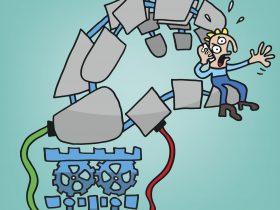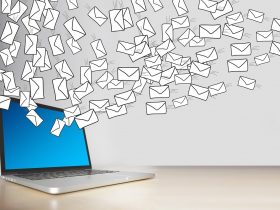Whether you’re working, shopping, or gaming, your computer’s speed is important to your overall experience. And there’s nothing like the speed of a new computer. But as days turn into months, you may begin to notice your lightning-fast computer is starting to s…l…o…w……d…o…w…n.
So what can you do to optimize and speed up your Windows PC to get it back to its former glory? We have some tips on how you can increase your system speed and enjoy your computer’s performance again.
Why is my Windows PC slowing down?
Imagine a new computer as an empty apartment. As you start moving in your things, the apartment (though more functional) begins to fill up with obstacles and barriers. Apply the same concept to your new Windows PC. As you begin to add programs, games, widgets, and toolbars, it takes more time to navigate and get from Point A to Point B, even though the computer is more functional overall. While it’s not practical to preserve your computer’s speed by avoiding downloads and installations, there are a few simple steps you can take to enjoy speed and function simultaneously.
How to speed up a Windows PC
A slower pc is not a sign that it needs to be replaced. There are various tricks and tips to speed up a sluggish system and your options for optimizing and cleaning up your computer will depend on which version of Windows you are using. There are general tips for all systems like deleting programs that you never use and cleaning out your hard disk. We’ve outlined some practical tips for two of the most common Windows systems below.
Windows 7
Performance troubleshooter
Windows 7 has a built-in tool you can use to help speed up its performance. To access it, click the Start button and select Control Panel. Type “troubleshooter” into the search box and select Troubleshooting when it comes up. Under System and Security, click Check. The tool will automatically search for multiple logged-in users and open programs, both which can slow down your computer’s performance.
Turn off visuals
What’s more important, speed or visual effects? If you can’t have both, scaling back on visuals can help speedup your computer. Under the Start menu, select Performance Information and Tools. You’ll can let Windows choose for you, or you can work your way through 20 visual effects you can turn off or minimize for enhanced computer performance.
Restart your computer
This is a classic tip but for good reason, especially if you tend to leave your computer running for days at a time. Restarting helps to clear out a computer’s memory and closes all running software. We recommend restarting your computer as needed rather than multiple times a day though as this has its own risks to consider.
Windows 10
Windows maintenance
One of the advantages of Windows 10 is that it includes additional security and performance tools compared to its predecessor. One such tool is automatic maintenance that includes security scanning and system diagnostics. As long as your computer is asleep and charging, automatic maintenance should run at 2:00 AM and automatically fix any problems that pop up during the scan. To make sure your computer is running automatic maintenance, enter the Control Panel from the Start menu. Select System and Security followed by Security and Maintenance. Adjust settings as needed if the tool is turned off.
Defrag your hard disk
A fragmented hard disk can slow down your PC. Luckily, Windows 10 has a built-in defragmenter. To start the process, just type “defrag” into the search box. Press Enter, select the drive you want to defrag, and click the Optimize button. You can defrag multiple disks simultaneously to save time or set up disk defragmentation to run automatically.
Power settings
Windows 10 features a “Power Saver” plan. While it saves on energy, it also slows down your computer. There’s no need to waste energy in the name of performance though. Just change your power plan to “balanced” for the best of both worlds. This can be done through the Control Panel. Select Hardware and Sound followed by Power Options, where you’ll see different power plans.
Avira System Speedup - The top Optimizer for Windows
Speed up and clean up your computer for optimal performance
Install Windows optimizer software to increase speed
Another option you can try when you need to increase your computer system speed is an optimizer. This type of software acts as a disk cleaner, disk defragmenter, program monitor, and overall productivity booster for any PC. One to try is Avira Optimizer for Windows. It can be used with both Windows 7 and Windows 10 and can speedup computers by more than 25 percent. The advantages of using Windows optimizer software include:
- Faster program cleanups – Let your optimizer software do the hard work for you and find out which programs can be shut down and which can be deleted entirely if no longer needed.
- More free disk space – Optimizer software can provide you with optimal free disk space for additional programs and improved speed.
- Unnecessary data is automatically deleted – Your computer’s internal systems can quickly become cluttered with unnecessary data. Optimizer software handles this issue.
- Additional privacy protection – Optimizer software cleans up unnecessary stored text, including internet searches and personal information.
- Faster computer performance – With your computer routinely monitored, you’ll have less moments of frustration and enjoy working on your computer more.
- Minimal manual maintenance – Windows optimizer software does all the work for you!
This post is also available in: German














